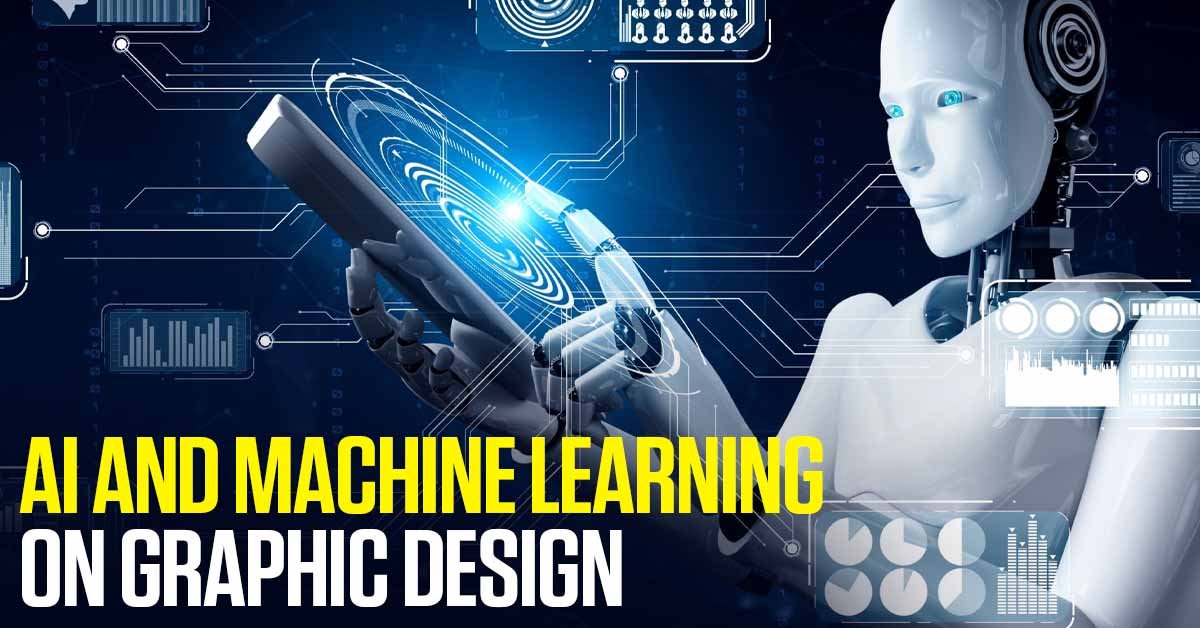Artificial intelligence (AI) and machine learning (ML) are revolutionizing various industries, and graphic design is no exception. These advanced technologies are transforming how designers work, enhancing creativity, and optimizing workflows. In this detailed blog, we will explore the impact of AI and machine learning on graphic design, highlighting the benefits, challenges, and future prospects.
Understanding AI and Machine Learning in Graphic Design
What is AI?
AI refers to the simulation of human intelligence in machines programmed to think and learn like humans. In graphic design, AI can perform tasks such as image recognition, pattern detection, and automated design generation.
What is Machine Learning?
Machine learning is a subset of AI that enables systems to learn from data and improve their performance over time without being explicitly programmed. In graphic design, ML algorithms can analyze large datasets to identify trends and make design recommendations.
Benefits of AI and Machine Learning in Graphic Design
1. Enhanced Creativity
AI and ML tools can enhance creativity by generating design ideas and providing inspiration. For instance, AI-powered design assistants can suggest layouts, color schemes, and typography based on the designer’s input and project requirements.
2. Improved Efficiency
AI and ML can automate repetitive tasks, allowing designers to focus on more complex and creative aspects of their work. Tasks such as resizing images, optimizing layouts, and even generating entire design drafts can be done quickly and accurately with AI tools.
3. Personalization
AI can analyze user data to create highly personalized designs. For example, AI-driven algorithms can customize marketing materials based on individual customer preferences, improving engagement and conversion rates.
4. Data-Driven Design
Machine learning can analyze vast amounts of data to identify design trends and patterns. This data-driven approach helps designers make informed decisions and create designs that resonate with their target audience.
5. Cost Savings
By automating routine tasks and optimizing workflows, AI and ML can reduce the time and resources required for design projects, leading to cost savings for both designers and clients.
Applications of AI and Machine Learning in Graphic Design
1. Automated Design Generation
AI-powered tools can generate design drafts based on input parameters. These tools use algorithms to create layouts, select colors, and apply typography, producing initial design concepts that designers can refine and customize.
2. Image and Pattern Recognition
AI can analyze images and recognize patterns, making it easier to identify and categorize visual elements. This technology is particularly useful for tasks such as logo detection, image tagging, and content organization.
3. Typography Selection
Machine learning algorithms can analyze text content and suggest suitable fonts based on readability, style, and context. This helps designers choose the best typography for their projects quickly and efficiently.
4. Color Palette Optimization
AI tools can recommend color palettes that complement the overall design and evoke the desired emotional response. These recommendations are based on color theory, design trends, and user preferences.
5. Layout Optimization
AI can analyze the visual hierarchy and composition of a design, suggesting adjustments to improve balance, alignment, and overall aesthetics. This helps designers create more polished and professional layouts.
6. Interactive Design Assistants
AI-driven design assistants, such as Adobe Sensei and Canva’s Magic Resize, provide real-time suggestions and automate routine tasks, enhancing the designer’s workflow and productivity.
Challenges of AI and Machine Learning in Graphic Design
1. Creativity and Originality
While AI can generate design ideas and automate tasks, it still lacks the human touch that brings originality and emotional depth to designs. Designers need to balance AI-generated content with their creativity to produce truly unique and impactful designs.
2. Learning Curve
Adopting AI and ML tools requires designers to learn new software and technologies, which can be time-consuming and challenging. Continuous learning and adaptation are necessary to stay updated with the latest advancements.
3. Ethical Considerations
AI and ML raise ethical concerns related to data privacy, intellectual property, and the potential loss of jobs due to automation. Designers and organizations must address these issues responsibly and transparently.
4. Dependence on Data
The effectiveness of AI and ML in graphic design depends on the quality and quantity of data available. Inaccurate or biased data can lead to flawed design recommendations and decisions.
Future Prospects of AI and Machine Learning in Graphic Design
1. Advanced Design Personalization
As AI and ML technologies continue to evolve, the ability to create highly personalized and targeted designs will improve. This will enable designers to deliver more relevant and engaging content to their audiences.
2. Enhanced Collaboration
AI-powered collaboration tools will facilitate seamless communication and idea sharing among designers, clients, and stakeholders. This will streamline the design process and improve project outcomes.
3. Integration with Augmented Reality (AR) and Virtual Reality (VR)
The integration of AI with AR and VR will open new possibilities for interactive and immersive design experiences. Designers will be able to create virtual environments and augmented visuals that enhance user engagement.
4. Continuous Learning and Improvement
Machine learning algorithms will become more sophisticated, continuously learning from new data and improving their design recommendations. This will lead to more accurate and effective design solutions over time.
Conclusion
AI and machine learning are transforming the graphic design industry, offering numerous benefits such as enhanced creativity, improved efficiency, and personalized design experiences. While there are challenges to overcome, the future prospects of these technologies are promising. By embracing AI and ML, designers can stay ahead of the curve and create innovative, impactful designs that meet the evolving needs of their clients and audiences.
Embracing the power of AI and machine learning in graphic design can lead to more efficient workflows, enhanced creativity, and personalized design solutions. By staying informed about the latest advancements and integrating these technologies into their processes, designers can unlock new possibilities and drive innovation in the field.
